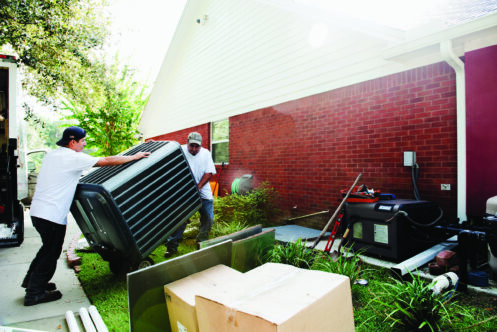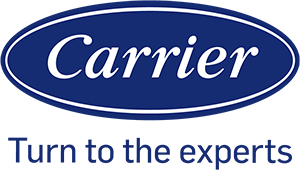Your home’s HVAC system is critical to your comfort and safety. You don’t want to cut corners to save on costs. At the same time, you want to know what to consider when evaluating possible systems for your home, whether you’re replacing an existing one or installing an HVAC unit in a new construction. Some important factors are what’s normally included, the cost ranges of equipment, and other variables that may affect your final price.
Common HVAC Systems and General Price Ranges
The typical HVAC system usually includes a heating unit and an air conditioner. In Southeast Michigan, homes typically have a forced air gas furnace and a central AC unit. According to Forbes, installing a complete system can cost $10,000 but high-end installations can cost much more. Costs vary widely. However, you can spend half that on a budget-friendly HVAC installation.
- Furnaces: Your furnace is critical to keeping your home safe over the winter. Electric furnaces are typically on the lower end of the price scale. They are cost-effective, environmentally friendly, and long-lasting but can increase your energy bills. Natural gas furnaces cost more upfront but are more efficient. Oil furnaces have higher operating costs but generate heat quickly.
- Air Conditioners: Portable and window air conditioners cost the least. A central air unit costs much more but is the most common type of home cooling system. It also requires ductwork, which can be time-consuming and expensive to install. The size, efficiency rating, and features of a new AC unit, such as variable-speed performance, also affect costs.
Keep in mind that high-efficiency systems cost more, as do alternative systems. The following are factors that affect how much your HVAC system will cost:
System Size
The biggest factor affecting the cost of HVAC installation is the heating and cooling capacity you’ll need. For both air conditioners and furnaces, their size is measured in British Thermal Units, or BTUs, and tons (1 ton equals 12,000 BTUs). A 4-ton AC unit costs more than a 2.5-ton AC unit.
Getting the right-sized HVAC system helps control your costs, both at installation and throughout your system’s life. Purchasing smaller units may cost a little less at installation. However, longer cycles, more frequent repairs, and a shorter service life can increase expenses.
System Efficiency
Price ranges for standard efficiency systems are generally lower. Furnace efficiency is rated in AFUE or Annual Fuel Utilization Efficiency. Air conditioners use SEER or Seasonal Energy Efficiency Ratio.
AFUE is the percentage of heat the system utilizes to heat your home compared to the amount it produces. The minimum AFUE for new furnaces is 80%, which is the rating for a mid-range system. High-efficiency systems have an AFUE of 90% to 98%.
SEER is the ratio between an AC system’s cooling output over the summer and the amount of energy it consumes. Under the new SEER2 system, the minimum rating in 2023 was set at 14.3 SEER2 (previously 15 SEER) in the Southern U.S. and 13.4 SEER2 (14 SEER) in the Northern. U.S. If an AC unit is 14 SEER, it has 14 times more cooling output than the energy it consumes. High-efficiency systems are 16 SEER and above, usually maxing out around 25.
For both furnaces and air conditioners, high-efficiency models cost more than standard-efficiency HVAC units. Keep in mind your monthly utility expenses will be lower with higher-efficiency appliances.
Season You Install the System
When you schedule HVAC installation or replacement can also have a significant impact on costs. Both HVAC installers and equipment manufacturers are busier during the extreme heat of the summer and the frigid cold of the winter. This is due, in part, to the fact that more systems break down during these times and need replacing.
To compensate for lower demand in the spring and fall, both HVAC service providers and equipment manufacturers offer various discounts and incentives. For instance, you may get your equipment discounted from the manufacturer while getting an extended labor warranty from the HVAC installer.
Single or Multiple Zone
A standard HVAC system has a single zone, meaning there’s one thermostat to control it. While running, it conditions your entire home. A higher-efficiency system may utilize multiple zones where only those areas that need it receive heated or cooled air.
In a central handling system, dampers inside the ducts control where the air flows. These can be operated manually or automatically by a zone panel. Within each zone, sensors signal when the automatic dampers need to open and close. They can also enable a single thermostat to control the temperature of an entire house. However, each zone can use a separate thermostat to adjust the temperature as needed.
Multi-zone HVAC systems tend to cost more than conventional ones.
Alternative Types of Systems
Alternative heating and cooling systems increase the HVAC replacement cost. For instance, some people use geothermal heat pumps, which use either a ground or a deep-water source as the heat transfer medium instead of the outside air. These systems may run $18,000 to $30,000 or more.
Other popular options include ductless mini-split systems that use individual air handlers around your home rather than a central system. These connect to a single heat pump compressor to provide both heating and cooling. However, you will likely need an auxiliary heater for the frigid temperatures we get throughout the winter. Mini-splits range from about $4,000 to $15,000 to install.
For heaters, some people opt for boilers, which use heated water that runs through radiators throughout the home. These aren’t as popular as they used to be but are still viable in certain instances. Boilers may range from $9,000 to $20,000.
HVAC Extras
HVAC systems have various extras you can add to make your home more comfortable. You can improve your indoor air quality by installing a whole-house humidifier, air purifier, or air scrubber. Another extra that can help improve your system’s efficiency is an ERV, or energy recovery ventilator. This helps minimize energy loss when air vents from inside your home.
Incentives and Rebates
There may be rebates or incentives available when you install your HVAC system, especially if you’re upgrading to higher-efficiency equipment. For instance, the Inflation Reduction Act of 2023 includes the Clean Energy Tax Credit, which provides 30% back when you install a geothermal system. Then there’s the Energy Efficient Home Improvement Tax Credit, which provides up to $2,000 for installing a heat pump. Work with your installer and tax professional to determine what incentives you may qualify for and how to take advantage of them.
Choice of HVAC Team
The company you choose also makes a difference in the price. The best companies have NATE-certified HVAC installation technicians. Most factory warranties don’t cover labor should the system malfunction during the warranty period. Some HVAC service providers will offer a labor warranty with the installation and may offer an extended labor warranty for a small additional fee. As you evaluate your quotes, check what’s included in the cost to compare the value to your price.
Contact C & C Heating & Air
Residents in Greater Metro Detroit turn to C & C Heating & Air Conditioning to keep their homes comfortable. Our NATE-certified team provides heating and air conditioning installation, maintenance, and repair, duct cleaning, indoor air quality solutions, and water heater services.
Contact C & C Heating & Air Conditioning today to schedule a consultation with one of our HVAC installation and service technicians.






